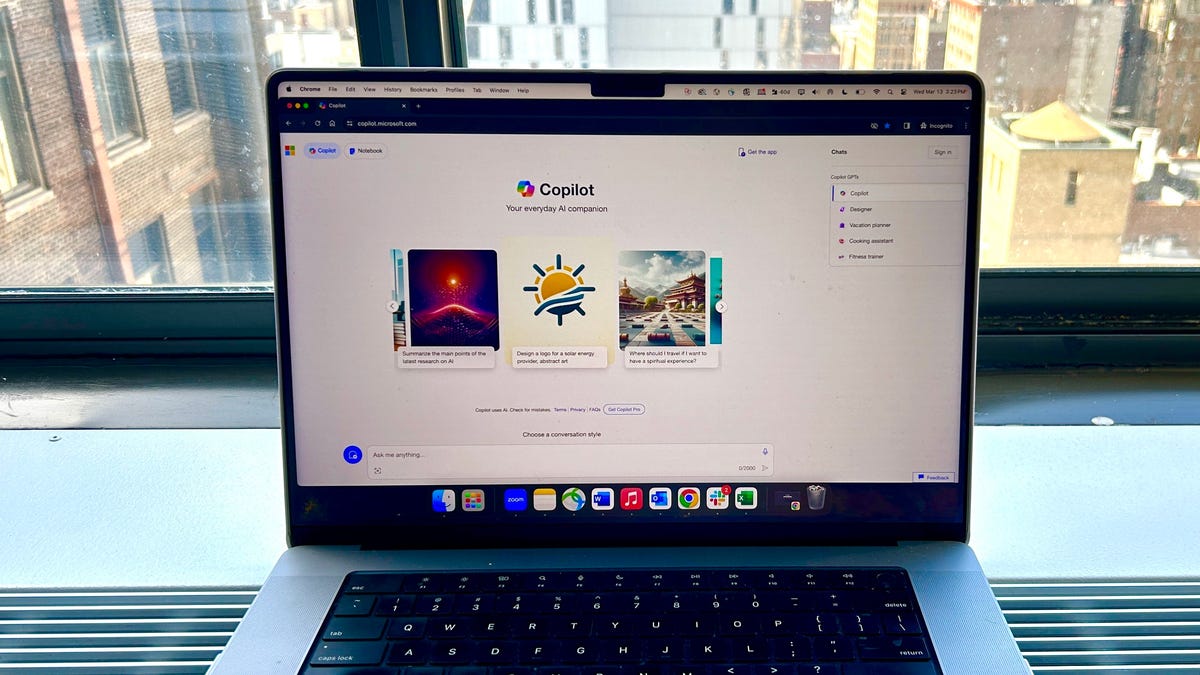
In the rapidly evolving landscape of artificial intelligence, the generative AI craze continues to captivate the tech world. Among the frontrunners in this revolution is OpenAI’s ChatGPT, a name synonymous with cutting-edge AI chatbot technology, celebrated for its ability to generate human-like text responses. Yet, Microsoft’s lesser-known offering, Copilot, is making a strong case for being not just a competitor but potentially a superior alternative, especially when considering the features accessible in its free version compared to the premium, $20-a-month ChatGPT Plus.
Copilot, powered by Microsoft’s Bing search engine, presents an invaluable advantage over ChatGPT: no knowledge cutoff. This capability allows Copilot to draw on the most current information available on the internet, providing users with answers that reflect the latest data and events. Conversely, the free version of ChatGPT operates with a knowledge base that extends only up until January 2022, rendering it unable to process queries about more recent occurrences without web access—a restriction that doesn’t burden Copilot users.
Beyond the access to real-time information, Copilot introduces another layer of utility through its citation feature. Every response from Copilot includes footnotes citing the sources of information, offering users an easy pathway to verify facts and delve deeper into topics. This feature marks a stark contrast to ChatGPT, where users might have to request sources in a follow-up query, often with varying success rates.
Another notable edge for Copilot is its foundation on a more advanced version of OpenAI’s language models: GPT-4 Turbo. This leap in technology grants Copilot enhanced capabilities across a broad spectrum of tasks, from writing and coding to reasoning, significantly outperforming the GPT-3.5 model utilized by ChatGPT’s free version. Although access to GPT-4 Turbo is available to ChatGPT subscribers, Copilot offers this advanced performance at no additional cost.
Diving into more futuristic features, Copilot caters to the modern user with voice input capabilities, allowing for a more interactive and convenient user experience akin to using a smartphone’s voice assistant. This function, coupled with Copilot’s ability to process image inputs—enabling users to ask questions about or receive information based on pictures—greatly expands the tool’s versatility and usefulness in everyday scenarios.
Expanding its repertoire even further, Copilot boasts an image-generation feature, integrating Microsoft Designer’s Image Creator to produce visual content in response to user prompts. This ability to generate images within the chat elevates Copilot’s functionality, offering a creative outlet and practical tool in one. Although ChatGPT Plus subscribers can also generate images, Copilot differentiates itself by producing multiple image options from a single prompt.
Lastly, Copilot’s connectivity to the internet opens up a realm of possibilities for e-commerce, acting as a personal shopping assistant by leveraging its conversational AI to recommend products based on user descriptions. This facet of Copilot not only showcases the practical application of AI in streamlining everyday tasks but also emphasizes the limitations faced by ChatGPT in contexts that require up-to-the-minute internet access.
While Google remains a staple for general searches, Copilot’s targeted assistance function illustrates how generative AI can offer more than just information retrieval—it can provide tailored recommendations, making it an indispensable tool in the user’s digital arsenal. Despite Copilot’s impressive features, the choice between it and ChatGPT may ultimately come down to user preference and the specific needs they aim to address with AI technology.
Source

.jpg)




